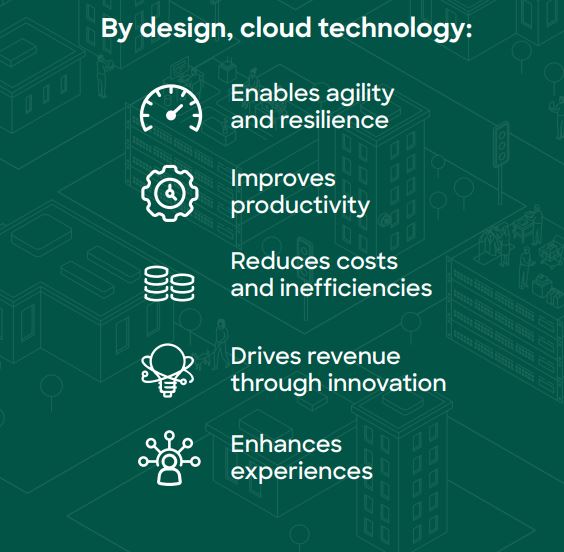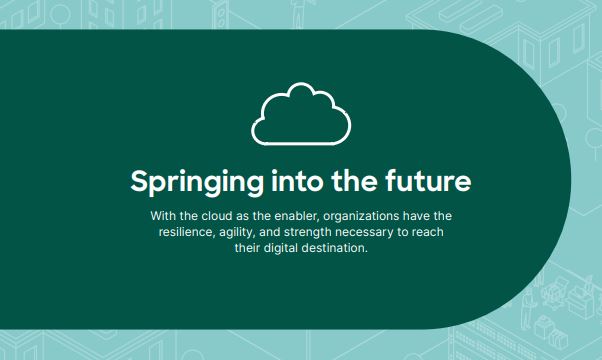

2023/07/12 Meraki Networking Solutions 1155 visit(s) 3 min to read
Ctelecoms

Modern leaders need to be ready for any unexpected circumstances or possibilities that may arise. In order to stay strong in a constantly evolving world, companies are adopting a digital-first strategy. The cloud has become the main facilitator of digital-first enterprises, providing benefits such as adaptability, cost savings, optimization, endurance, and versatility. In fact, it is impossible to have a digital-first enterprise without the cloud.
But not just any cloud approach will do.
In order to fully leverage the advantages of cloud technology, companies need a cohesive approach that simplifies the process of integrating information technology, devices, and physical environments. This can be achieved through a cloud-managed platform.
So why should business leaders seeking to better steer their organizations in times of disruption—and in times of growth—look to the cloud?

It's not enough to have a great product or service if your infrastructure can't handle sudden increases in demand or is not dependable. In fact, according to Gartner, resilience has become a key factor that sets businesses apart from their competitors. Resilience is also closely tied to security. A study by Cisco found that when an organization's IT and security teams collaborate to establish a widespread, dependable, cloud-first infrastructure, the business becomes more resilient and better prepared to handle future challenges.
Dr. William Lee, who is the Research Director for IDC Cloud Services Asia/Pacific, stated that organizations are striving to achieve "digital resiliency," which is the ability to withstand disruption and maintain business continuity through the use of technology.
In a related discussion about how a digital approach is crucial for business transformation, including streamlined operations, digital scalability, and faster growth, Lee emphasized that the platform for achieving these goals must be cloud-based. This is because the cloud provides a natural platform for integrating and unifying diverse technologies and solutions.
Organizations are facing challenges such as dispersed workforces,, talent shortages, supply chain disruptions, and pricing pressures which are driving them to enhance productivity and streamline operations. The cloud is proving to be a valuable resource for addressing these challenges. By providing access to cloud-based data and tools, employees can work from any location, securely collaborating with colleagues and customers.
Companies can also expand their hiring opportunities and connect with new markets and geographies. Additionally, the cloud can improve productivity by reducing costly errors. For instance, integrating IoT devices, such as sensors and cameras, into the network can enable manufacturers to detect defective parts and proactively identify risks like improper use or lack of safety gear.
In addition to enhancing productivity, the cloud can also help businesses reduce costs and inefficiencies. Many organizations are now merging physical security and cybersecurity onto a single network to leverage cloud-based efficiencies. They are taking advantage of the centralized management provided by a single network dashboard, which includes benefits such as easy deployment for non-technical staff, cost savings, automated updates that eliminate the time and errors associated with manual processes, and significantly reduced inefficiencies through automation at scale. These advantages enable businesses to streamline their operations and achieve greater efficiency and cost savings.
Technology has become an essential component of innovation, to the extent that 84% of IT leaders believe that the CIO is becoming a change-maker, leading both business and IT initiatives, according to IDG. To turn innovative ideas into reality, it is crucial to have an agile team supported by a flexible and secure infrastructure of interconnected technologies. This infrastructure should enable seamless communication and collaboration among team members and provide the necessary tools and resources to support the development and implementation of innovative ideas. By leveraging technology in this way, businesses can enhance their ability to innovate and stay ahead of the competition.

Going above and beyond customer expectations can be challenging, but with the right cloud infrastructure, businesses can be more agile and responsive to changing needs. For example, if employees who are currently working from home need to work from headquarters tomorrow, a cloud-based approach can easily accommodate that change. Employees can be productive from anywhere, whether it's a hotel, coffee shop, or corporate office. This approach can also enable enterprises to provide better experiences for both employees and customers, allowing them to connect and work in ways that suit their preferences without incurring high costs typically associated with personalization. Overall, the cloud provides a flexible and cost-effective way for businesses to deliver a superior experience.
